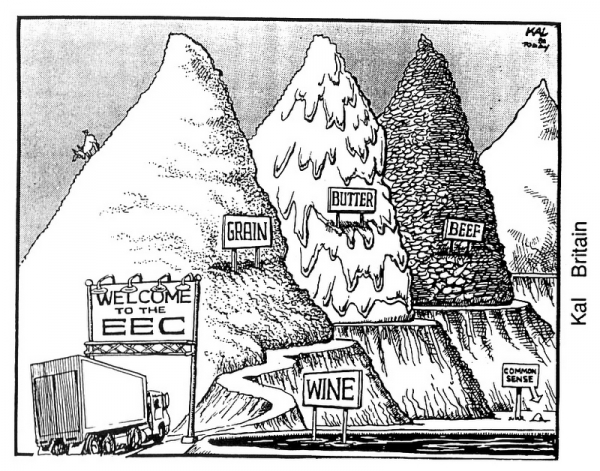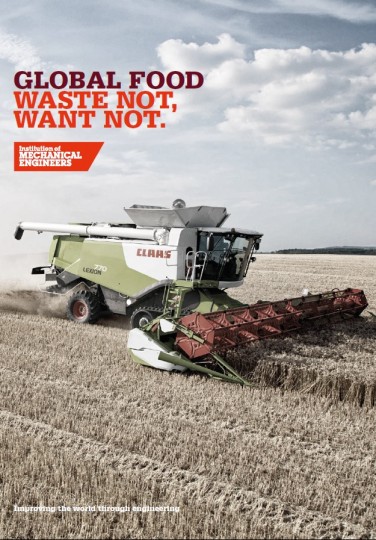No better time to consider what’s on and off our plate than in the wake of the European horsemeat scandal. Had you ever, prior to this, stopped to take account of what you are buying and eating – and wasting?
Continuing on my quest to convert to a sustainable lifestyle, I came across a piece by Voice Ireland (an Irish non-governmental environmental charity), which asks us to consider our ‘food print’. I have explored my ecological footprint before and have established that I would probably need one and a half planets to sustain my current lifestyle. With that in mind, I set about exploring how I faired at the 3 Rs as they related to my food consumption.

The internet, as one can predict, is awash with studies and reports on the amount of food waste that is created globally. One such finding according to the Institution of Mechanical Engineers was the revelation that
Up to half of all the food produced each year goes to waste.
Some 30-50% of food produced on the planet – that’s about 1.2-2 billion tonnes – is lost even before it reaches the shops, as a result of poor harvesting practices, storage and transportation – in other words: wastage.
In their recent report Global Food: Waste not Want Not (2013) the Institution of Mechanical Engineers state that in addition to the above levels of waste:
Large amounts of land, energy, fertilisers and water have also been lost in the production of foodstuffs which simply end up as waste.
They remind us of the stark UN statistic that by 2075 the total  world population is expected to rise to 9.5 billion people. The evolving wealth, calorific and dietary preferences of all this growing population are going to impact on the production of food and waste throughout the globe.
world population is expected to rise to 9.5 billion people. The evolving wealth, calorific and dietary preferences of all this growing population are going to impact on the production of food and waste throughout the globe.
In relation to developing nations, the majority of the waste is reported to occur at the ‘farmer-producer’ levels through ‘Inefficient harvesting, inadequate local transportation and poor infrastructure’ resulting in over handling of food, which is then poorly stored. In societies considered developed, such as Ireland for example, the waste is experienced primarily at the consumer level:
Major supermarkets, in meeting consumer expectations, will often reject entire crops of perfectly edible fruit and vegetables at the farm because they do not meet exacting marketing standards for their physical characteristics, such as size and appearance.
Only good looking fruit and vegetables are allowed in our supermarkets!
In the UK for example, some 30% of the vegetable crop is never harvested as a result of meeting these stringent physical attributes. Globally, 1.6 million tonnes of food waste is generated annually in this way.
At the consumer level, the food that manages to pass quality control and finally make it onto our supermarket shelf is also wasted – some 30-50% of what we buy, we waste, in particular the more perishable goods.
More food waste facts…
Source: Tristram Stuart’s Food Waste Facts, taken from his excellent book Waste: Uncovering the Global Food Scandal (Penguin, 2009). |
The Environmental Protection Agency Ireland (EPA) outlines 4 reasons why we should avoid food waste:
- One third of the waste we purchase is wasted without being used.
- Throwing out food contributes to climate change, through energy usage in production and through emissions from landfill.
- There are ethical and moral arguments for avoiding waste, when food is scarce in many parts of the world.
- More immediately it will save you money, with the average family throwing away €700 worth of food each year.
So, what can each of us do?
Ireland can’t afford its food waste. The cost in running Ireland’s landfills while also exporting our waste abroad is on the rise. So too are the costs of importing fertiliser into the country. The EPA has reported that we will run out of landfill space in just 8 years if no new landfills are opened.
Voice Ireland has come up with 5 very easy steps that won’t drastically change our lifestyle when considering our ‘food print’.
1. Buy loose fruit and vegetables instead of pre-packaged. Just buy enough for the next 5-7 days. Re-consider those supermarket ‘offers’ that encourage you to buy much more than you need or can use. Consider also that bulk buying may not be the cheap option that we think it is: ‘The per lb cost may be higher for pre-packaged produce, which doesn’t even consider the future spoilage in your own fridge of the remaining carrots or other fruit/veg that you haven’t used.’
2. Don’t rely solely on ‘use by’ dates for fruits and vegetables. Many vegetables don’t automatically go bad once it reaches its ‘use by’ date. Vegetables that are considered ‘bendy’ or ‘wrinkly’, can be used in soups or casseroles/stews.
3. Eat ‘Family Style.’ One of the main contributors of food waste in the home is ‘plate waste’ – food that is left over on our plates after a meal. Rather than filling up our plates with food that we may not manage to finish eating and which most likely gets thrown away, they suggest placing vegetables in a bowl at the centre of the table where people can take what they want. This enables leftover food to be used the next day, rather than being thrown away.
Also, when trying to prevent food waste when you have young children, the EPA’s brochure has tips on reducing food waste and at the same time saving money that can add up to €700 per year for some families.
4. Choose ‘Ugly Food’: Fruit and vegetables that don’t line up with our perceptions of how it should look are considered ‘ugly.’ You won’t find this variety stocked in your local supermarket. There is no difference in the taste. Consider asking a local greengrocer to stock ‘reject’ food – which is more than likely going to be cheaper than its ‘perfect’ counterpart.
5. Ask for a ‘doggie bag’ or reduced portions when you are eating out. Some restaurants serve half portions and almost all will pack the food you don’t eat so that you can take it home for the next day – You paid for it, so why not enjoy it later?
Individual and community actions begin at home!
Try to start some actions with your green grocer or food shop and your local restaurants
Talk to your friends and colleagues to get a campaign going.
Learn more – not only about global waste such as – the UNEP initiative Think Eat Save: reduce your footprint on tips to make a difference to your pocket such as exploring some good recipes for leftover food and understanding how best to store food.
10 top tips for the Savvy food shopper, from the EPA
- Don’t go shopping when you are hungry, you’ll buy more than you need
- If you are shopping for the week, try to plan your meals ahead
- Check your fridge, freezer and cupboards before you go shopping, and plan meals around what you find
- Then make a shopping list… and try to stick to it
- Beware of special deals – these are great for toilet rolls and shampoo but bad for fruit, veg and salads (anything that can go off quickly). These are the things we buy because of a “good deal”, but often they do not get eaten
- Try to buy loose fruit and veg – you get what you need and can cut down on packaging waste in your bin as well
- Check use-by-dates to avoid buying food that might be thrown out if not eaten immediately
- Poke around at the back of shelves – you’ll often find use-by dates that are further away
- Shop for what you actually eat, not for what you want/wish you would eat (e.g “I am going to be really healthy this week and eat lots of yogurts”) and then not eat them
- If it’s an option for you, try shopping online for the basics – you get only what you want because you are not distracted by all the other goods on shelves AND you save money – it’s like magic
Recycling and reusing: food waste can be easy to dispose of with a little commitment on our part. Some ideas:
- Set up a food composting system at home. You can buy a subsidised compost bin from your local authority or check out the internet on ideas for building your own. For anyone interested in composting see the EPA brochure on composting.
- Some areas have a food waste collection service – in my area this is the ‘Brown Bin,’ which takes nearly all the other food that you can’t compost. Recycling food waste generates products such as compost that can then be sold onto consumers.
Some areas have a food waste collection service – in my area this is the ‘Brown Bin,’ which takes nearly all the other food that you can’t compost. Recycling food waste generates products such as compost that can then be sold onto consumers.
Personally, I don’t find this bin very useful as it’s far too big for the waste we create, so we opt to compost what we can, which makes up the bulk of our food waste, and then reduce and/or re-use the rest.
Some areas have more suitably sized bins – do check this out first.
____________________________
Explore more….
- Food Matters: environmental impact of food waste| 2009 | Voice Ireland
- Also check out the most recent National Waste Report for Ireland | 2010 | Environmental Protection Agency
